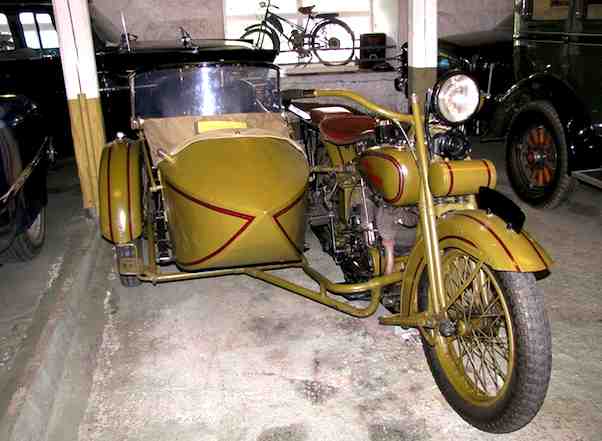
Harley-Davidson’s mission statement and vision statement focus on developing the business, in terms of products and branding. As one of the biggest motorcycle manufacturers, the company aligns its mission and vision toward strengthening its industry position and connecting with customers. Based on the corporate mission and vision statements, Harley-Davidson’s strategies and goals emphasize enhancements in products and customer relations. Thus, the corporate vision and mission statements determine the company’s strategic direction in responding to business challenges in the global motorcycle market. Harley-Davidson’s business purpose, mission, and vision guide competitiveness and organizational development.
Harley-Davidson’s mission statement reflects the historical focus of the business and its role in the biker community. On the other hand, the vision statement directs the company’s strategic development as a leader in the motorcycle industry. Thus, Harley-Davidson’s vision statement includes factors that can be used as metrics for assessing the business, while the company’s mission statement focuses on a philosophical perspective about the underlying purpose and goals of the business organization. Despite this disparity, both the mission statement and the vision statement direct strategic management attention to variables for ensuring business capabilities against competition, which is a major challenge determined in the Five Forces analysis of Harley-Davidson. The vision statement underscores the importance of innovation to keep the business growing despite competition. On the other hand, Harley-Davidson’s mission statement highlights the importance of branding and motorcycle design to ensure competitiveness in the international market where many strong competitors operate.
Harley-Davidson’s Mission Statement
Harley-Davidson’s mission statement is “More than building machines, we stand for the timeless pursuit of adventure. Freedom for the soul.” This corporate mission represents the business purpose regarding the product, its utility, and its benefit to the rider. The following are the main points of Harley-Davidson’s mission statement:
- Manufacturing operations
- Product development for market demand related to adventure
- Beneficial experience for riders
In terms of “building machines,” the mission statement refers to manufacturing operations as a foundation of Harley-Davidson’s business. Considering the company’s current products, these operations focus on motorcycle design, production, and sales. The corporate mission also indicates the pursuit of adventure, which can be used to guide Harley-Davidson’s competitive strategy and growth strategies. For example, new product development can focus on motor vehicles that satisfy target customers’ need for adventure. On the other hand, in terms of “freedom for the soul,” Harley-Davidson’s mission statement directs attention to experiential benefits for bikers. The company sees itself and its products as providers of that sense of freedom that customers experience in riding motorcycles.
The applicability and practicality of this mission statement (and the vision statement) depend on external conditions, such as the economic, social, and technological factors enumerated in the PESTEL/PESTLE analysis of Harley-Davidson, which affect market response to the company and its products. For example, the relevance of the factors of adventure and experience depends on social trends influencing the transportation sector and people’s attitude toward using motorcycles for their regular mobility needs. As a result, these external factors influence strategic effectiveness and the achievement of business goals developed based on Harley-Davidson’s mission statement and its strategic interpretation in connection with the company’s vision statement.
Harley-Davidson’s Vision Statement
Harley-Davidson’s vision statement is “Building our legend and leading through innovation, evolution and emotion.” This corporate vision states the motorcycle manufacturer’s approach to a future of stronger business performance and industry positioning. Harley-Davidson’s vision statement has the following main points:
- Brand and corporate image development
- Leadership
- Innovation, evolution, and emotion
The vision statement refers to the legend of the company and its products linked to the chopper culture and its community. This legend is frequently used for branding and marketing campaigns in Harley-Davidson’s marketing mix (4P). This part of the vision directs strategic decisions to support and strengthen the motorcycle company’s corporate image and brand. The SWOT analysis of Harley-Davidson identifies the brand as a business strength and competitive advantage. The corporate vision also states that the company aims for leadership in the motorcycle industry. To achieve and keep the leading position, the company must outcompete Honda, Ducati, Yamaha, BMW, and other players in the market. Moreover, Harley-Davidson’s vision statement indicates “innovation, evolution, and emotion” as factors in achieving this business leadership.
Implications of Harley-Davidson’s Mission & Vision
Harley-Davidson’s mission statement and vision statement are aligned, in terms of “building,” which suggests strategic goals for business growth and expansion. Also, the corporate mission and vision refer to the psychological aspect of the business and its motorcycles. For example, the mission statement talks about “freedom for the soul” while the vision statement includes “emotion” as a factor in leading the motorcycle industry. This psychological aspect means that Harley-Davidson’s strategies involve the purpose of strengthening the company’s psychological bond with its loyal customers. The motorcycle company’s core values determine the sociocultural approach for satisfying this psychological purpose linked to the corporate vision and mission.
References
- Harley-Davidson, Inc. – Bikes.
- Harley-Davidson, Inc. – Form 10-K.
- Harley-Davidson, Inc. – Our Strategy.
- Märk, S., & Situm, M. (2024). Long-term guidance in flux: The evolving significance of mission and vision in strategic management. Family Business Transformation: Strategic Orientation and Business Modelling, 1, 1.
- Wada, Y., Bizen, Y., Isaka, T., & Hayakawa, T. (2024). Exploring the components of “Kando” and the factors evoking it during motorcycle riding. Transportation Research Interdisciplinary Perspectives, 25, 101104.